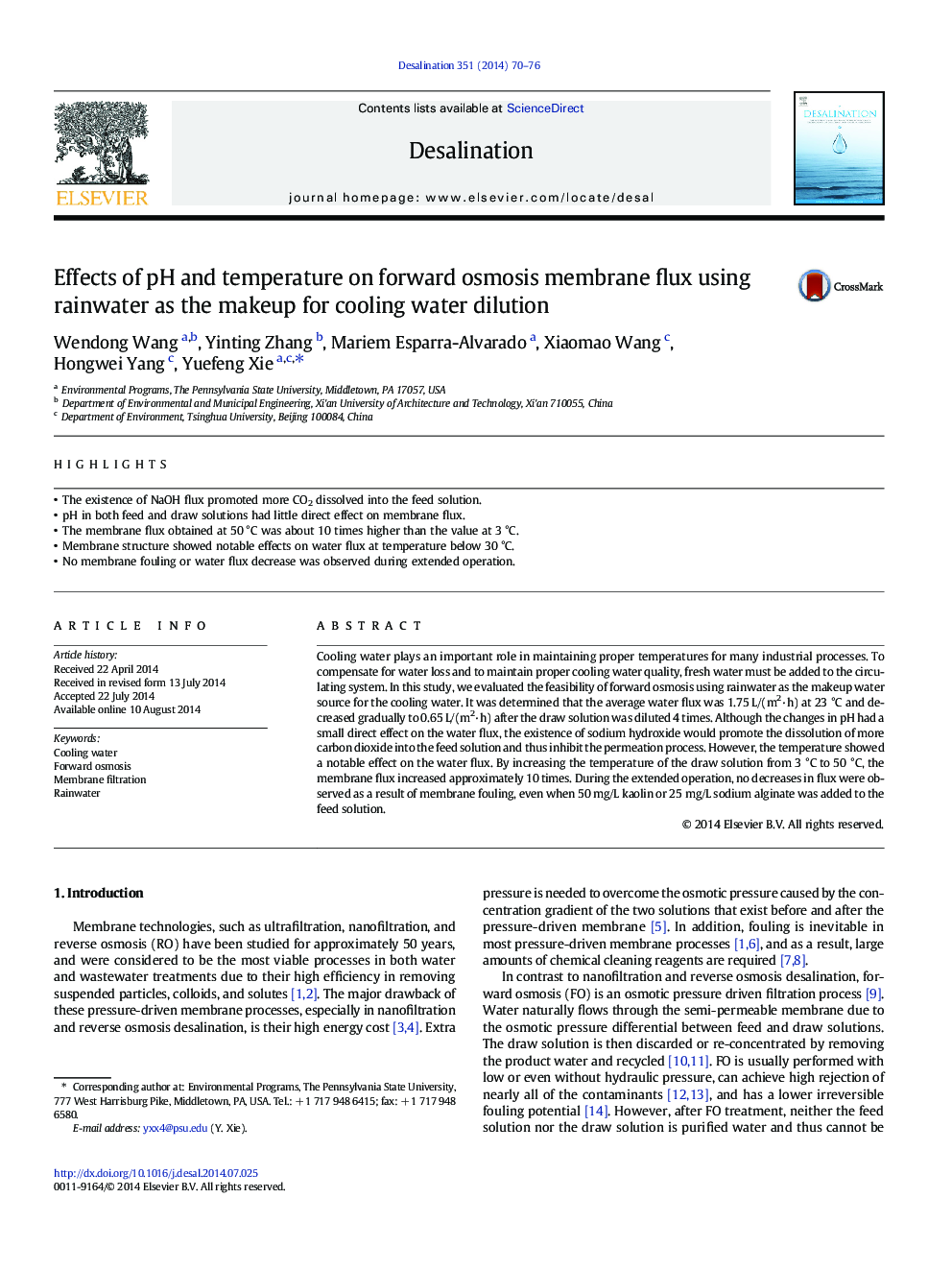| Article ID | Journal | Published Year | Pages | File Type |
|---|---|---|---|---|
| 623289 | Desalination | 2014 | 7 Pages |
•The existence of NaOH flux promoted more CO2 dissolved into the feed solution.•pH in both feed and draw solutions had little direct effect on membrane flux.•The membrane flux obtained at 50 °C was about 10 times higher than the value at 3 °C.•Membrane structure showed notable effects on water flux at temperature below 30 °C.•No membrane fouling or water flux decrease was observed during extended operation.
Cooling water plays an important role in maintaining proper temperatures for many industrial processes. To compensate for water loss and to maintain proper cooling water quality, fresh water must be added to the circulating system. In this study, we evaluated the feasibility of forward osmosis using rainwater as the makeup water source for the cooling water. It was determined that the average water flux was 1.75 L/(m2·h) at 23 °C and decreased gradually to 0.65 L/(m2·h) after the draw solution was diluted 4 times. Although the changes in pH had a small direct effect on the water flux, the existence of sodium hydroxide would promote the dissolution of more carbon dioxide into the feed solution and thus inhibit the permeation process. However, the temperature showed a notable effect on the water flux. By increasing the temperature of the draw solution from 3 °C to 50 °C, the membrane flux increased approximately 10 times. During the extended operation, no decreases in flux were observed as a result of membrane fouling, even when 50 mg/L kaolin or 25 mg/L sodium alginate was added to the feed solution.
